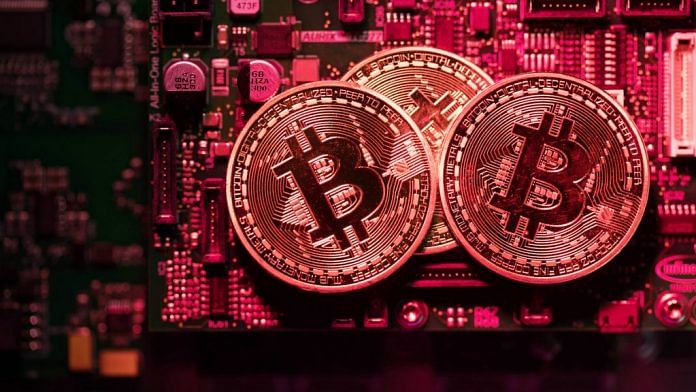
Thank you dear subscribers, we are overwhelmed with your response.
Your Turn is a unique section from ThePrint featuring points of view from its subscribers. If you are a subscriber, have a point of view, please send it to us. If not, do subscribe here: https://theprint.in/
Digital Assets
Goes the lines from Pink Floyd’s famous ‘The Wall’ from the 1990s hit song
“We don’t need no education
We don’t need no thought control
Teacher, leave them kids alone “
Since Bitcoin arrived on the scene in 2008, the mystery behind the identity of its creator Satoshi Nakamoto has added mystique to its origin. It also gave a way forward to the concept of decentralized consensus. It seemed Pink Floyd’s famous lines made their mark in the financial market. The ‘market’ as we know, is (by definition) free within reason, and with a centralized intermediary or often a regulator (akin to the ‘teacher’ in the song).
Bitcoin is the first known cryptocurrency, followed by quite a few and the list has kept growing. By and large, the majority view is that the crypto currencies are digital assets or crypto assets and not currencies. This lexical ambiguity does not make much difference to many, but important for public policy and other aspects that flow out of public policy space. Tax and ownership being a few.
The Crypto or digital assets operate on a system broadly described as Blockchain. Cryptography is an integral part of blockchain which makes it more secure. The System, once optimized, can lead to lower costs (it moves value from peer to peer with no central clearing house or intermediary) and faster.
Based on what you rely on, the estimated market capitalisation (value) of digital assets is USD 2.5 trillion with estimated growth (CAGR) of 15% per annum. Compare that with the Global Equity market of USD 100 trillion (then there are Debt and Bonds as well) with an estimated growth of 6% per year. These are estimates but good to give a perspective.
Think of the last crisis in the financial services. The subprime mortgage crisis is only 15 years old and its aftereffects ae still felt. That happened despite the existence of a centralized system (its another matter that the regulators had gone fishing).
The financial market is complex, and risks are part and parcel of any financial transaction. Anecdotal instances of ‘big’ gains are easily propagated with some added colours as they pass from one mouth to another. Internet and almost unfettered right of participants add to the dimensions of the profits/ returns. As more and more join the party, the market size grows. More often the high return rate does not endure and ultimately there is a correction. Whether the correction is mild or significant – the latter due to a fix of the structural issues, a periodic correction is unavoidable. The number of people or entities that lose in the entire process is many times more than a small handful who make a timely exit because they know what was coming. Fundamentals are easily forgotten, and decisions are influenced by ‘high reward- high risk’ instruments, with the last 2 words wished away. We have seen this at play during the Dot com bubble and then subprime mortgage- both in the last 30 years.
The 9th March announcement of President Biden signing an executive order for responsible development of digital assets is in my view a positive action. I believe this is the majority view as well. Before the crypto asset market becomes too large, it is critical to set few rules of the road. Despite the various regulations and obligations to be transparent in case of the conventional financial instruments, there is still so much of asymmetry of information between the investor and investee (or issuer). With Block chain and digital assets, this asymmetry is much higher. The US Securities and Exchange Commission (SEC) and its chairman Gary Gensler is in a good position to settle the structure of a regulatory framework. Chairman Gary Gensler is himself a legend in public policy space and probably the best person to lead the way. At the end of the day when it comes to the financial market, USA is still the largest cauldron and needs to be stirred well and responsibly. Additionally, we can’t let this sophisticated innovation be hijacked for illicit purposes, which in the current times is a big risk. Settling the governance issue will be a continuum and not a one- time discrete set of regulations, but the framework must begin now.
And to those who still swear by the Pink Floyd song, I would say that the …Block chain technology settled the Byzantine Generals’ problem and therefore forging agreement or even a symbiotic relationship with the regulator (SEC) by treating them as another ‘General’ will auger well for the ‘single truth’ and support the growth of its market cap. Time will tell whether there is a there-there or not, but 2022 is wildly different from the early days of internet and technological adoption is many times faster than in the 1990s.
These pieces are being published as they have been received – they have not been edited/fact-checked by ThePrint.
Also read: This is how we can empower 8 billion minds by 2030


COMMENTS